









Click any image for a larger view and please note that all farms are not the same, so the practices outlined may be different at other locations.
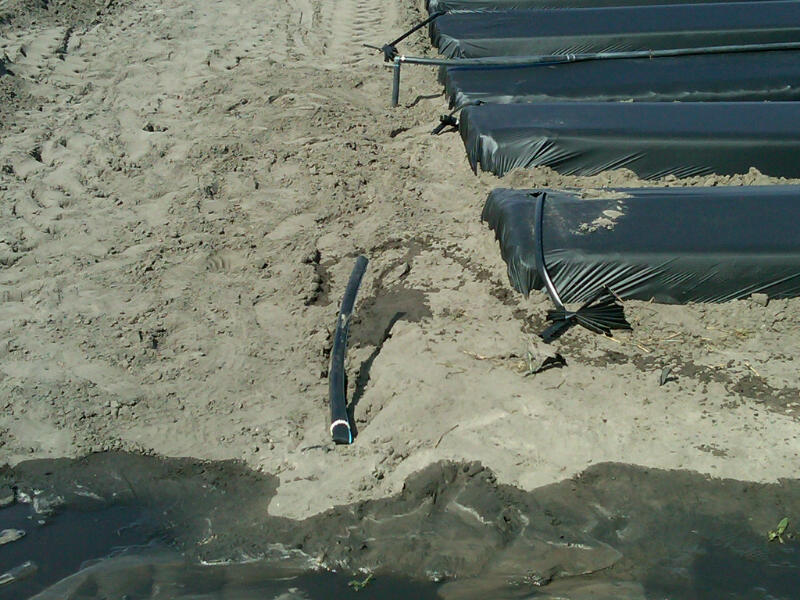
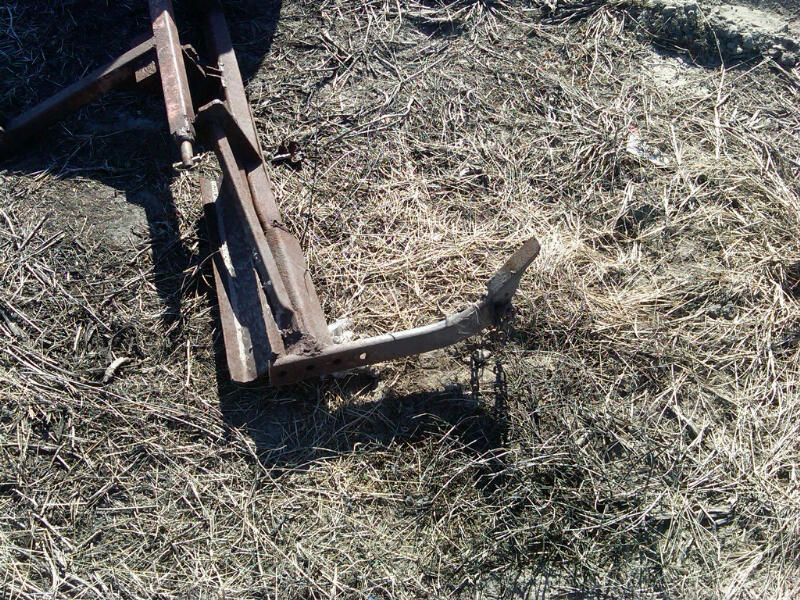 Remember that during plastic laying, the drip tube is laid down under the plastic of every row on the farm. Now, we have to start the process of connecting the tubes up to the water supply in order to provide water and nutrients to our strawberry plants. We use a 1" polyethylene pipe that is pulled into the ground by a hook (right) attached to a tractor. The pipe is usually 8-12" inches into the ground and runs perpendicular to the rows themselves. It's not an exact science, but the pipe is generally about 6" past the end of the row as well.
Remember that during plastic laying, the drip tube is laid down under the plastic of every row on the farm. Now, we have to start the process of connecting the tubes up to the water supply in order to provide water and nutrients to our strawberry plants. We use a 1" polyethylene pipe that is pulled into the ground by a hook (right) attached to a tractor. The pipe is usually 8-12" inches into the ground and runs perpendicular to the rows themselves. It's not an exact science, but the pipe is generally about 6" past the end of the row as well.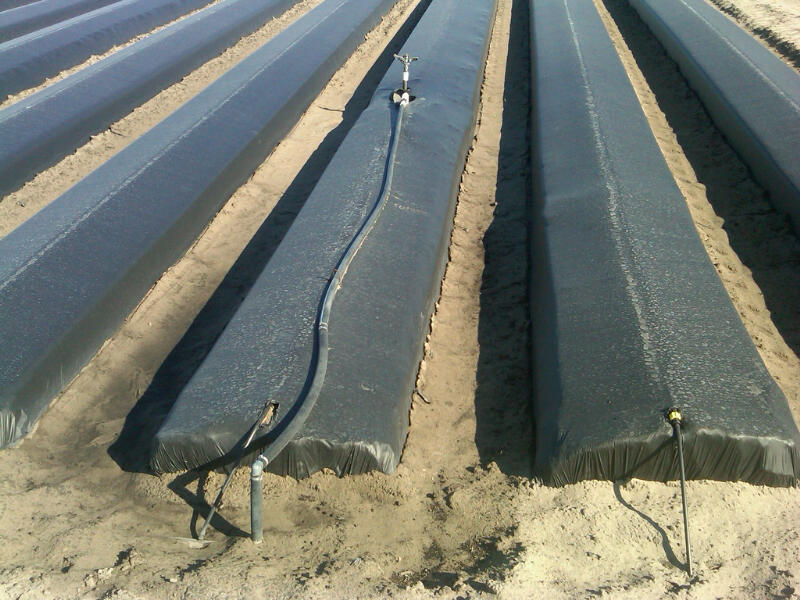
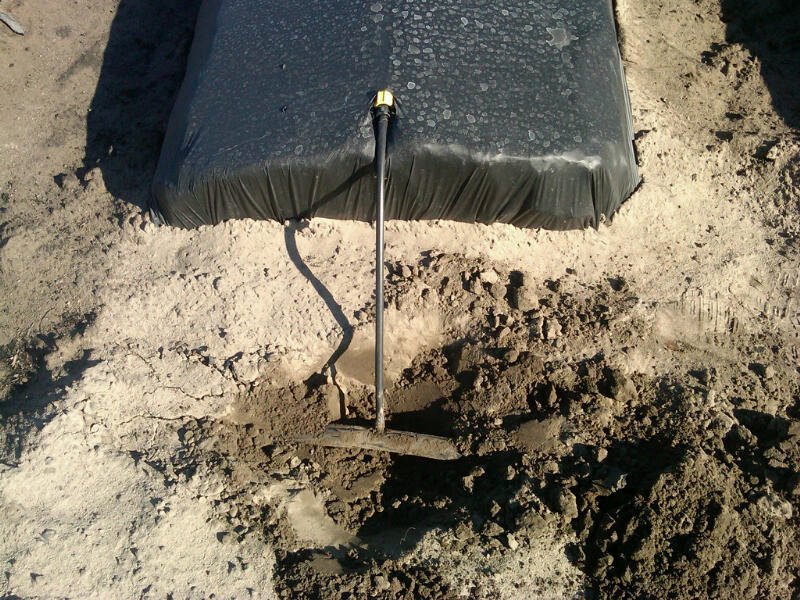 We now have to get the polyethlene pipe in the ground to connect with our well water supply. If you look at the picture on the far left, you notice a long piece of polyethylene pipe laying on top of the plastic. That pipe is connected to PVC fittings (white) that are attached to the network of pipes underground that carry water from the well source. You will find one of these pipes on every row where we have rainbirds as there is a connection to the drip irrigation system found there. So, now there is water flowing from the ground into the polyethylene pipe, but we have to then connect every single row on the farm to the system. The picture to your immediate left shows the connector between the polyethylene pipe in the ground and the drip tube under the plastic. Once all the connections are made, we start the well and test to make sure water is flowing through every row in a field before we can plant a strawberry. If water isn't readily available, the plant will not get the valuable water and nutrients needed to survive in our climate.
We now have to get the polyethlene pipe in the ground to connect with our well water supply. If you look at the picture on the far left, you notice a long piece of polyethylene pipe laying on top of the plastic. That pipe is connected to PVC fittings (white) that are attached to the network of pipes underground that carry water from the well source. You will find one of these pipes on every row where we have rainbirds as there is a connection to the drip irrigation system found there. So, now there is water flowing from the ground into the polyethylene pipe, but we have to then connect every single row on the farm to the system. The picture to your immediate left shows the connector between the polyethylene pipe in the ground and the drip tube under the plastic. Once all the connections are made, we start the well and test to make sure water is flowing through every row in a field before we can plant a strawberry. If water isn't readily available, the plant will not get the valuable water and nutrients needed to survive in our climate.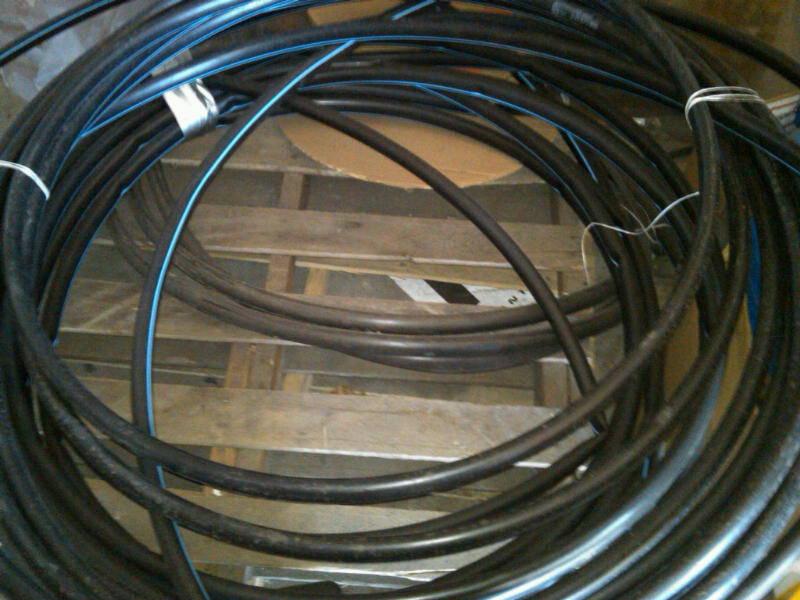
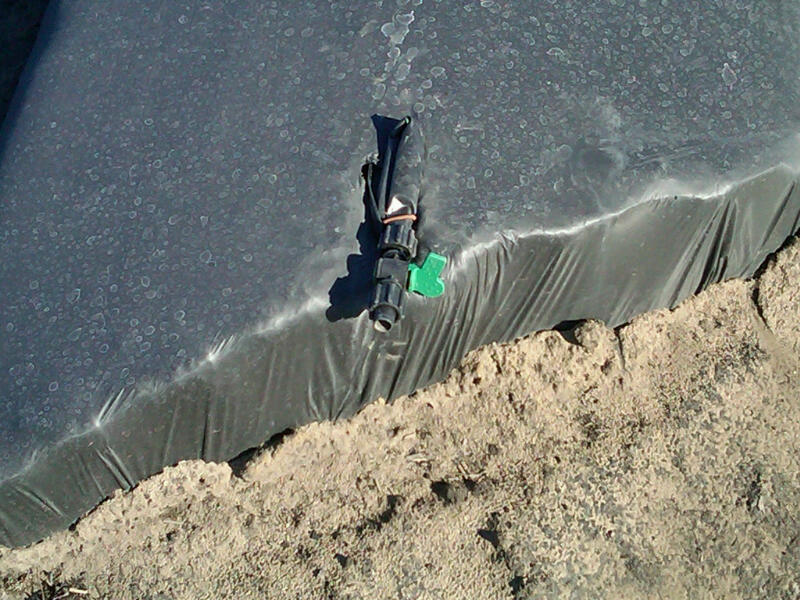 Once we are sure the water is making its way down an entire row of plastic, we then have to cap off the drip tube. An end (right) is connected to the drip tube with a valve that can be opened or closed at any time. We keep it closed during the season to prevent unnecessary runoff of water as we want the maximum amount of water and nutrients to be given to those plants under the bed. Before drip irrigation was implemented, overhead irrigation was the only way to provide water to our crops. Drip irrigation technology has proven to be one of the most beneficial tools in strawberry production because we are able to give the proper water and nutrients right to the root system of the plant. It also serves the purpose of being a standard in water conservation for the agricultural industry and doesn't allow any fertilizer runoff towards our lakes and streams. The next installment will be the arrival of our strawberry plants and then getting them into the ground. If you ever have any questions about how the farm operates, we're always available via e-mail at spiveyfarms@gmail.com
Once we are sure the water is making its way down an entire row of plastic, we then have to cap off the drip tube. An end (right) is connected to the drip tube with a valve that can be opened or closed at any time. We keep it closed during the season to prevent unnecessary runoff of water as we want the maximum amount of water and nutrients to be given to those plants under the bed. Before drip irrigation was implemented, overhead irrigation was the only way to provide water to our crops. Drip irrigation technology has proven to be one of the most beneficial tools in strawberry production because we are able to give the proper water and nutrients right to the root system of the plant. It also serves the purpose of being a standard in water conservation for the agricultural industry and doesn't allow any fertilizer runoff towards our lakes and streams. The next installment will be the arrival of our strawberry plants and then getting them into the ground. If you ever have any questions about how the farm operates, we're always available via e-mail at spiveyfarms@gmail.com